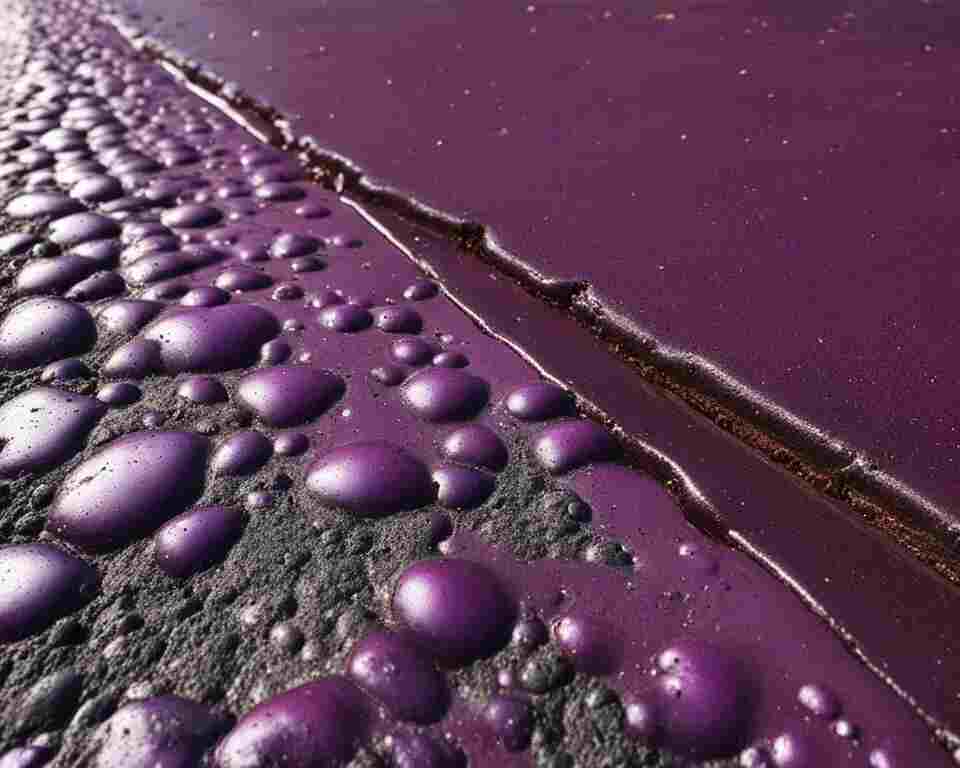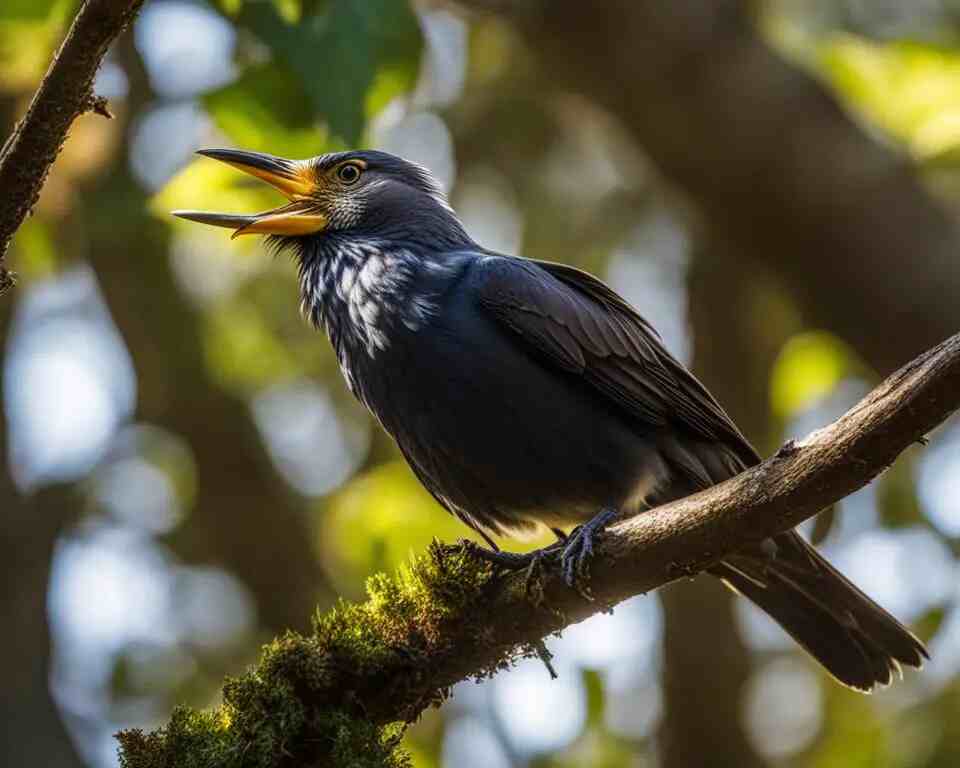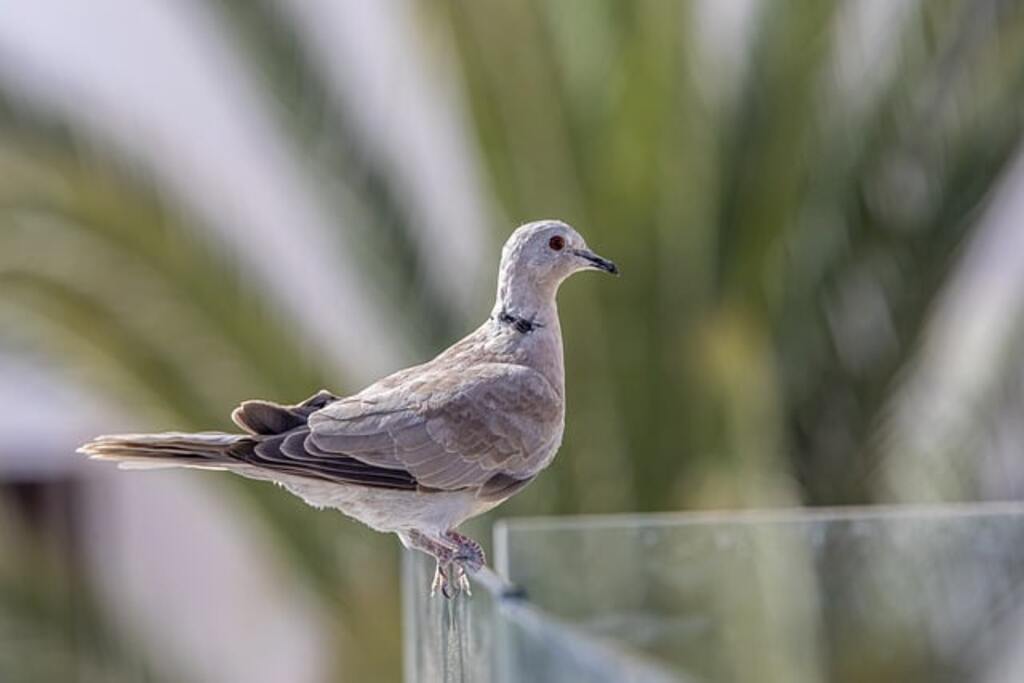Have you ever wondered why bird poop is purple? In this article, I will delve into the reasons behind the unusual coloration of bird droppings, exploring the fascinating origins and facts surrounding this phenomenon.
Bird poop, or bird droppings, is a unique blend of feces and urine, distinct from mammals. This combination of solid and liquid waste gives bird droppings their distinctive purple tint, among other colors.
Table of Contents
- 1 Key Takeaways:
- 2 Why is Bird Poop Purple?
- 3 The Role Of Diet In Bird Excrement Color
- 4 Digestive System And Waste Production
- 5 Common Food Sources For Birds
- 6 Environmental Factors Influencing Color
- 7 Health Implications Of Bird Droppings
- 8 Is Bird Feather Cleaning Essential for Preventing Purple Bird Poop?
- 9 Conclusion
- 10 FAQs
- 10.1 Why is bird poop purple?
- 10.2 What influences the color of bird droppings?
- 10.3 Are there any health risks associated with bird droppings?
- 10.4 Does bird feather cleaning prevent purple bird poop?
- 10.5 What can bird droppings tell us about birds?
- 10.6 How should bird droppings be handled and cleaned?
- 10.7 Can the color of bird droppings change over time?
- 11 Source Links
- 12 Author
Key Takeaways:
- The color of bird droppings is primarily influenced by the bird’s diet and digestive system.
- Fruits and berries, which contain dietary pigments, contribute to the purple color of bird droppings.
- Environmental factors such as sunlight, climate, and pollution can also influence bird droppings’ color.
- Bird droppings can carry pathogens and pose health risks, so proper handling is important.
- Feather cleaning does not directly prevent the appearance of purple bird poop.

Now, let’s explore the role of diet in bird excrement color and how the avian digestive system produces these fascinating hues.
Why is Bird Poop Purple?
Bird poop is not inherently purple. If you observe purple bird droppings, it might be due to the bird’s diet. Some birds consume certain pigments from berries or fruits, which can result in colorful droppings. The presence of pigments like anthocyanins in the diet can cause variations in the color of bird poop, including shades of purple.
The Role Of Diet In Bird Excrement Color
A bird’s diet plays a vital role in the color of its excrement. About 90% of a bird’s diet consists of fruits and berries, which contain dietary pigments. These pigments can cause bird droppings to appear purple or other vibrant colors. The variety of food sources birds consume, including seeds, nuts, insects, and small animals, can contribute to the color variations in their droppings.
Table: Bird Diet and Droppings Color
| Food Source | Droppings Color |
|---|---|
| Fruits and berries | Purple or vibrant colors |
| Seeds and nuts | Varied colors |
| Insects | Dark brown or greenish |
| Small animals | Dark brown or gray |
These natural colorants, derived from the bird’s diet, are absorbed into their system and eventually excreted as part of their fecal matter. While fruits and berries are commonly associated with purple droppings, other food sources can also lead to varied colors. The type and quantity of pigments in the bird’s diet directly influence the final coloration of their droppings.
Understanding the link between a bird’s diet and the color of its excrement can provide valuable insights into their feeding habits and ecosystem. The presence of certain colors in bird droppings can indicate their preference for specific food sources and the overall health of their habitat.
Digestive System And Waste Production
In order to understand why bird poop is purple, it is important to delve into the intricacies of birds’ digestive system and waste production. Birds have a unique digestive system that differs from mammals. Unlike mammals, birds do not have separate openings for excretion and reproduction. Instead, they have a single opening called the cloaca, through which both waste and reproductive fluids are expelled.
Birds’ digestive system is highly efficient at extracting nutrients from their food. The food enters their beak and travels down the esophagus into the crop, where it is temporarily stored. From the crop, the food travels to the stomach, known as the proventriculus, where it is mixed with digestive enzymes. Next, the food moves into the gizzard, a muscular organ that grinds and breaks down the food using stones or grit swallowed by the bird.
As the food passes through the bird’s digestive system, the nutrients are absorbed into the bloodstream while the waste products are eliminated. The pigments present in the bird’s diet are absorbed into its system and eventually excreted as part of its fecal matter. This process contributes to the distinctive coloration of bird droppings, including the purple tint that has sparked curiosity among many.

Digestive System And Waste Production
| Organ | Function |
|---|---|
| Beak | Food intake and manipulation |
| Esophagus | Passage of food from beak to crop |
| Crop | Temporary food storage |
| Proventriculus | Secretion of digestive enzymes |
| Gizzard | Mechanical breakdown of food |
| Cloaca | Excretion of waste and reproductive fluids |
Common Food Sources For Birds
Birds have a diverse diet that includes various food sources, contributing to the composition and color of their droppings. The types of food they consume can range from fruits and berries to seeds, nuts, insects, and even small animals.
Fruits and berries, such as elderberries, blackberries, or blueberries, are common food sources for birds. These dark-colored fruits can contain pigments that contribute to the purple color of bird droppings. The consumption of different fruits and berries can result in variations in the color of their excrement.
In addition to fruits and berries, birds also consume a variety of other food sources. Seeds and nuts are popular choices, providing essential nutrients and energy. Insects, such as beetles, caterpillars, or ants, are also part of their diet, especially during breeding seasons when birds need to feed their young.
The Variety of Bird Diets
Birds have evolved to adapt to their environment, and their diet reflects this. The specific food sources they rely on can vary depending on their habitat, be it forests, grasslands, wetlands, or urban areas.
For example, seed-eating birds like finches and sparrows are commonly found in grassland or woodland areas, where there is an abundance of grass seeds and tree seeds. In contrast, insect-eating birds like swallows and warblers thrive in areas with a high insect population, such as wetlands or near bodies of water.
The diversity of bird diets contributes to the overall biodiversity of ecosystems, as different species play unique roles in seed dispersal, pollination, and insect control. Understanding the food sources available to birds is crucial for conservation efforts and maintaining a healthy ecological balance.
| Food Source | Examples |
|---|---|
| Fruits and Berries | Elderberries, blackberries, blueberries |
| Seeds and Nuts | Sunflower seeds, acorns, pine nuts |
| Insects | Beetles, caterpillars, ants |
| Small Animals | Worms, small rodents, fish |
Environmental Factors Influencing Color
The color of bird droppings can be influenced by various environmental factors in addition to their diet. One significant factor is the presence of carotenoid pigments in the bird’s food sources. Carotenoids are naturally occurring compounds found in fruits and vegetables that can contribute to the vibrant colors seen in bird droppings.
Depending on the specific carotenoids present in their diet, birds can produce droppings ranging from vivid yellows to striking purples. For example, if a bird consumes fruits rich in carotenoids like papaya or mango, it may result in droppings with an orange or yellow hue. On the other hand, berries such as elderberries or blackberries can impart a purple tint to the droppings.
In addition to carotenoid pigments, other environmental factors can also impact the color of bird droppings. Sunlight exposure, climate conditions, temperature, humidity, altitude, pollution levels, as well as factors related to the bird’s behavior and lifestyle, can all contribute to variations in droppings’ color. However, the exact interactions between these factors and the resulting coloration of bird droppings are still being studied.
| Environmental Factors | Impact on Bird Droppings Color |
|---|---|
| Sunlight exposure | Can intensify or fade the color of droppings |
| Climate conditions | Can influence the overall moisture content and consistency of droppings |
| Temperature and humidity | Can affect the rate of pigment oxidation and degradation |
| Altitude | May impact the availability of certain food sources, thereby affecting the pigment composition in bird droppings |
| Pollution levels | Can potentially introduce additional compounds into the bird’s diet and alter droppings’ color |
| Behavior and lifestyle | Factors such as nesting, stress, mating rituals, and migration patterns could indirectly influence the color of droppings |
Understanding the environmental factors that contribute to bird droppings’ color provides valuable insights into avian biology and behavior. It highlights the complex interactions between a bird’s diet, its surroundings, and its physiology. By examining and analyzing bird droppings, researchers and enthusiasts can gain a better understanding of the ecological dynamics in bird populations.
Health Implications Of Bird Droppings
When it comes to bird droppings, there are some potential health risks that need to be taken into consideration. These droppings can carry pathogens such as salmonella and E. coli, which can cause gastrointestinal issues in humans or respiratory problems when inhaled as dried dust particles. It is important to handle and clean bird droppings properly to minimize the risk of disease transmission.
“Bird droppings can harbor various pathogens, including bacteria and viruses, which can pose a health risk to humans. It is essential to take precautions when dealing with bird droppings to protect yourself from potential infections.” – Dr. Emily Johnson, Avian Health Specialist
Salmonella and E. coli are commonly found in bird droppings, and they can contaminate surfaces and objects if not dealt with carefully. To reduce the risk of infection, it is recommended to wear gloves, use disinfectants, and avoid direct contact with bird droppings. Additionally, it is advisable to maintain proper hygiene practices, such as washing hands thoroughly after handling or cleaning areas affected by bird droppings.
While the presence of pathogens in bird droppings can be a concern, it is important to note that the risk of infection can vary depending on individual susceptibility and exposure. By taking necessary precautions and practicing good hygiene, the potential health risks associated with bird droppings can be minimized.
| Health Risks | Precautions |
|---|---|
| Salmonella | – Wear gloves when handling bird droppings |
| E. coli | – Use disinfectants to clean affected areas |
| Respiratory issues | – Avoid inhaling dried bird droppings |
| Proper hygiene | – Wash hands thoroughly after handling or cleaning |
Preventing Disease Transmission
To prevent disease transmission from bird droppings, it is essential to be cautious and follow proper protocols. Here are some key steps to take:
- Wear protective gloves when handling bird droppings.
- Use disinfectants to clean surfaces or objects contaminated by droppings.
- Avoid direct contact with bird droppings, especially when dry or dusty.
- Practice good hygiene by washing hands thoroughly with soap and water.
- Keep pets away from areas affected by bird droppings.
- Seek medical attention if you experience any symptoms of infection after exposure to bird droppings.
Is Bird Feather Cleaning Essential for Preventing Purple Bird Poop?
When it comes to preventing purple bird poop, many people wonder if regular feather cleaning plays a role. While bird feather cleaning is an essential part of their grooming routine, it does not directly prevent the appearance of purple bird poop. The color of bird droppings is primarily influenced by their diet and digestive system, rather than the cleanliness of their feathers.
Feather cleaning is important for birds to maintain their flight capabilities, thermoregulation, and overall health. Birds use their beaks to preen and groom their feathers, removing dirt, parasites, and excess oil. This helps to keep their feathers in optimal condition, ensuring efficient flight and insulation. However, bird feather cleaning does not have a direct impact on the color of their droppings.
The purple color of bird poop is primarily determined by their diet, specifically the pigments present in the food they consume. Fruits, berries, and other food sources that birds eat can contain pigments that result in the distinctive purple tint of their droppings. So, while clean feathers are important for the overall well-being of birds, they do not have a role in preventing purple bird poop.
To minimize the appearance of purple bird droppings, it is crucial to focus on providing a balanced and nutritious diet for birds. This means offering a variety of food sources, including seeds, nuts, insects, and small animals, in addition to fruits and berries. By providing a diverse diet, bird owners can help maintain the natural color variations in their pet’s droppings.

Conclusion
After exploring the fascinating world of bird droppings, it is evident that the purple color of bird poop is primarily influenced by their diet and digestive system. As birds consume various fruits, berries, and other food sources containing pigments, these compounds are absorbed into their system and excreted as part of their fecal matter. This unique combination of solid and liquid waste creates the distinctive purple tint that we often associate with bird droppings.
Understanding the factors that influence bird droppings can provide us with valuable insights into their health, diet, and behavior. By analyzing the color and composition of bird droppings, researchers can gather information about the bird’s diet and overall well-being. Additionally, bird droppings can also indicate the presence of certain environmental factors, such as pollution or specific food sources.
It is important to handle bird droppings with caution due to the potential health risks they may pose. Bird droppings can carry pathogens such as salmonella and E. coli, which can cause gastrointestinal issues in humans or respiratory problems when inhaled as dried dust particles. Proper handling and cleaning of bird droppings are crucial in minimizing the risk of disease transmission.
FAQs
Why is bird poop purple?
Bird poop is purple due to the bird’s diet and digestive system. The pigments present in their food, such as dark-colored berries, fruits, and vegetables, are absorbed into their system and excreted as part of their fecal matter.
What influences the color of bird droppings?
The color of bird droppings can be influenced by various factors, including the bird’s diet, environmental factors such as sunlight and climate, as well as other factors like pollution, insects, predators, mating, migration, genetics, nesting, and stress.
Are there any health risks associated with bird droppings?
Bird droppings can carry pathogens such as salmonella and E. coli, which can cause gastrointestinal issues in humans or respiratory problems when inhaled as dried dust particles. It is important to handle and clean bird droppings with caution to minimize the risk of disease transmission.
Does bird feather cleaning prevent purple bird poop?
No, bird feather cleaning is an essential part of their grooming routine, but it does not directly prevent the appearance of purple bird poop. The color of bird droppings is primarily influenced by their diet and digestive system, rather than the cleanliness of their feathers.
What can bird droppings tell us about birds?
The color and composition of bird droppings can provide insights into their health, diet, and behavior. Understanding the factors that influence bird droppings can help in studying and monitoring bird populations.
How should bird droppings be handled and cleaned?
Bird droppings should be handled with caution, as they can carry pathogens. When cleaning bird droppings, it is recommended to wear gloves, use a damp cloth or paper towel to avoid creating dust particles, and properly dispose of the waste. Disinfecting the affected area afterwards is also advisable.
Can the color of bird droppings change over time?
Yes, the color of bird droppings can vary based on the bird’s diet, environmental factors, and other influences. Therefore, the color of bird droppings can change throughout different seasons or stages of the bird’s life.


